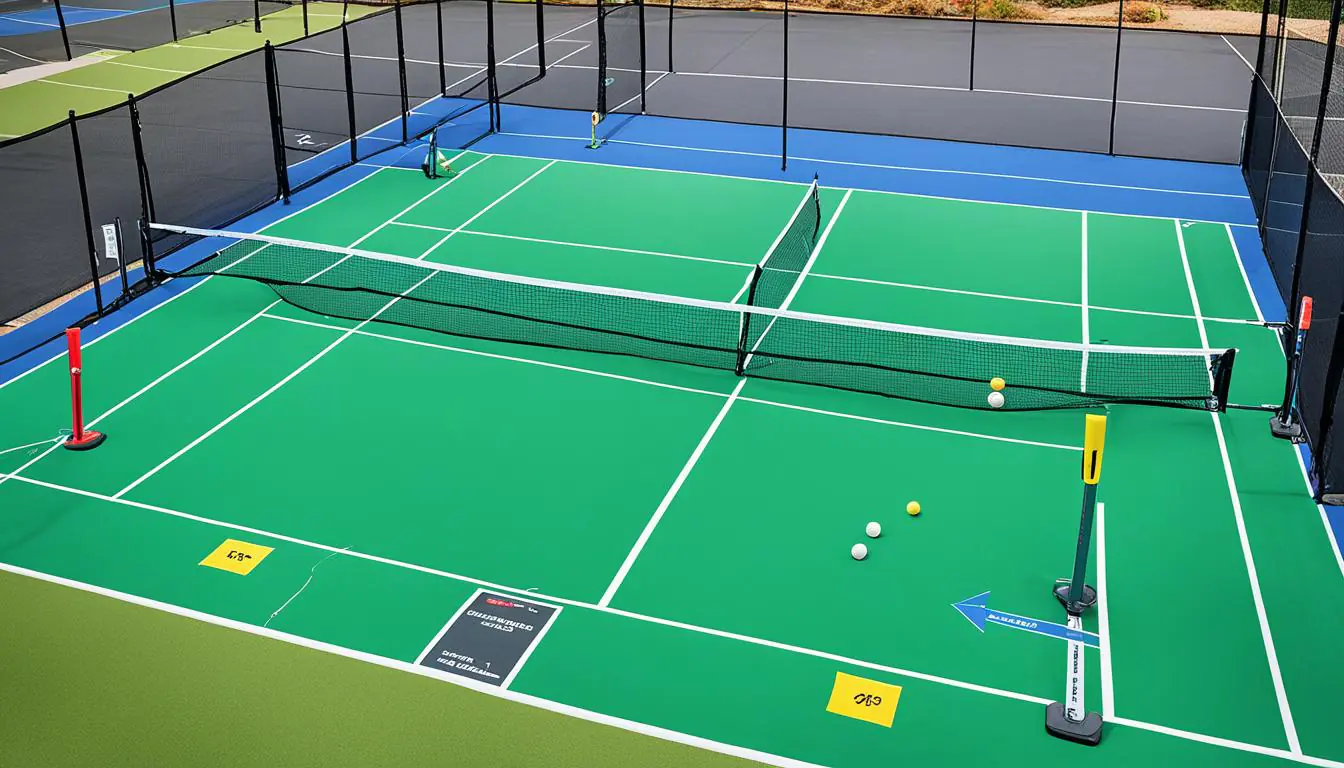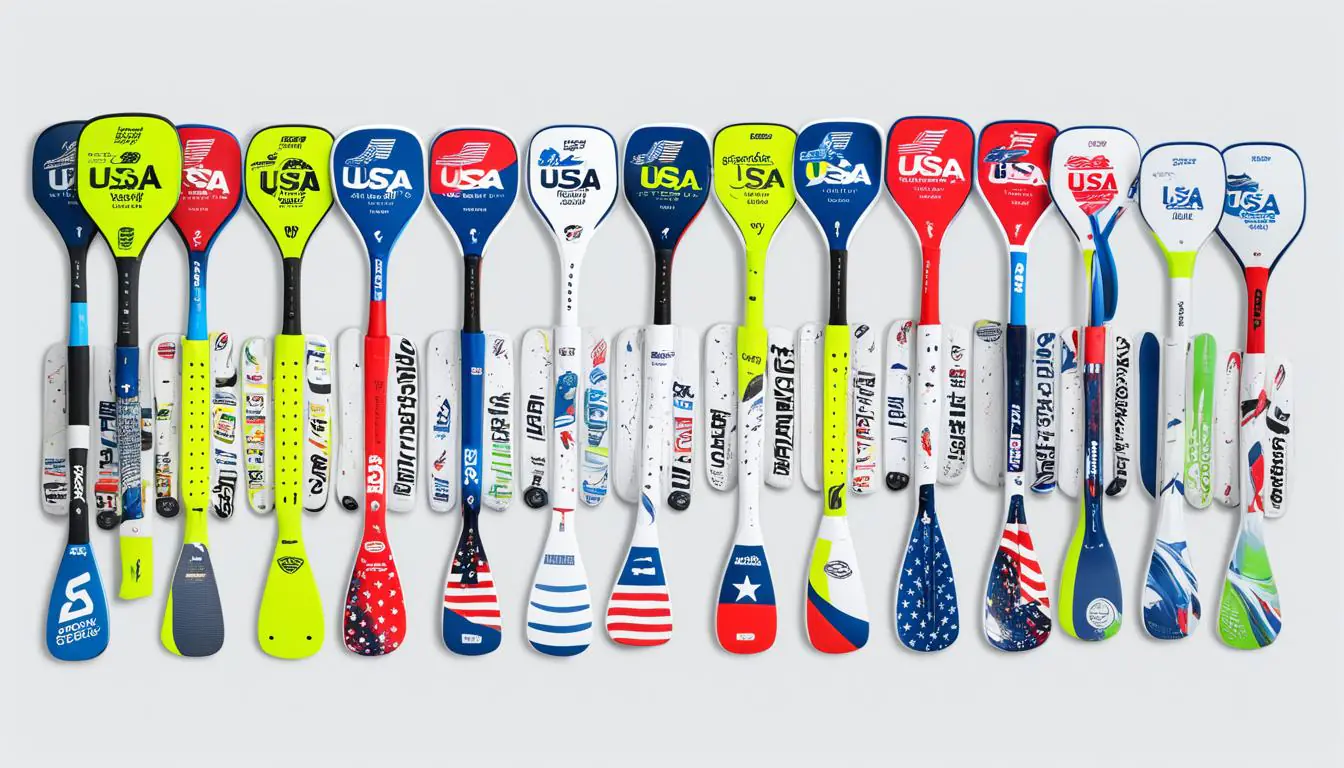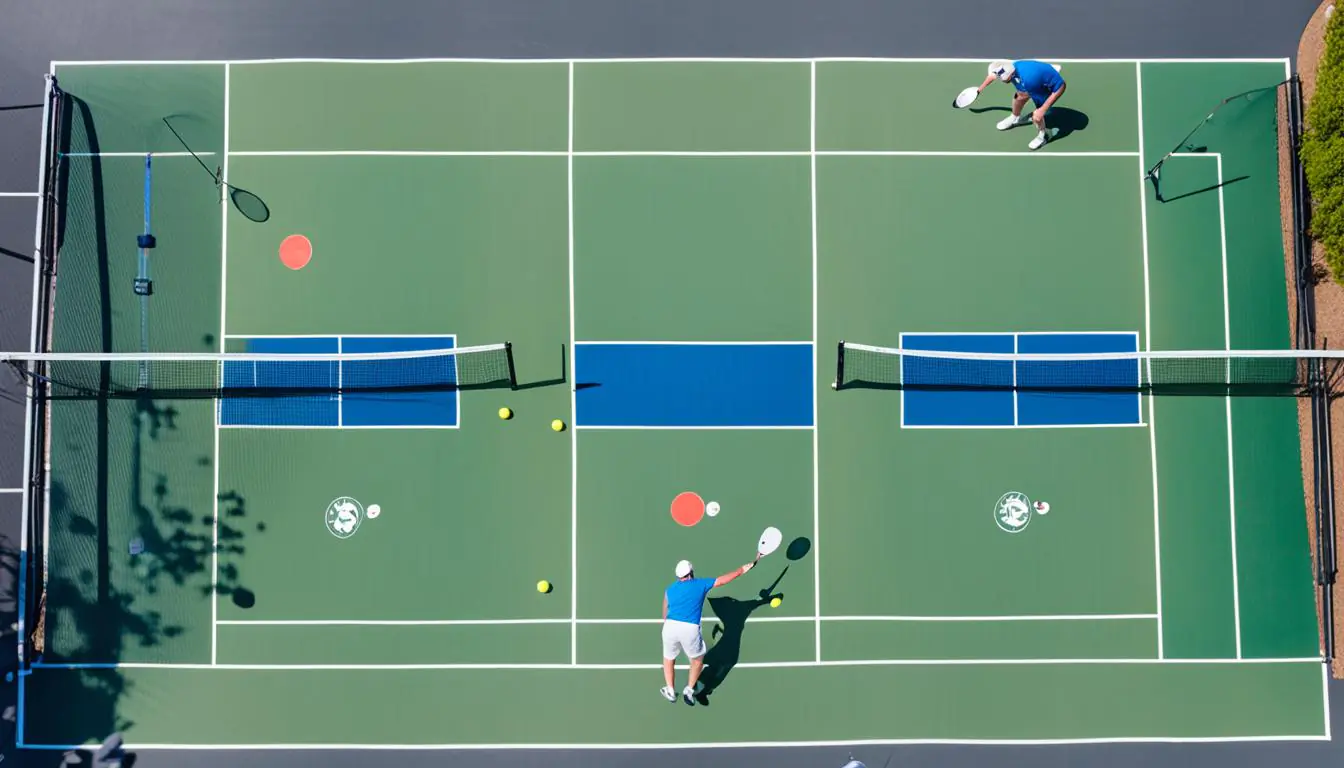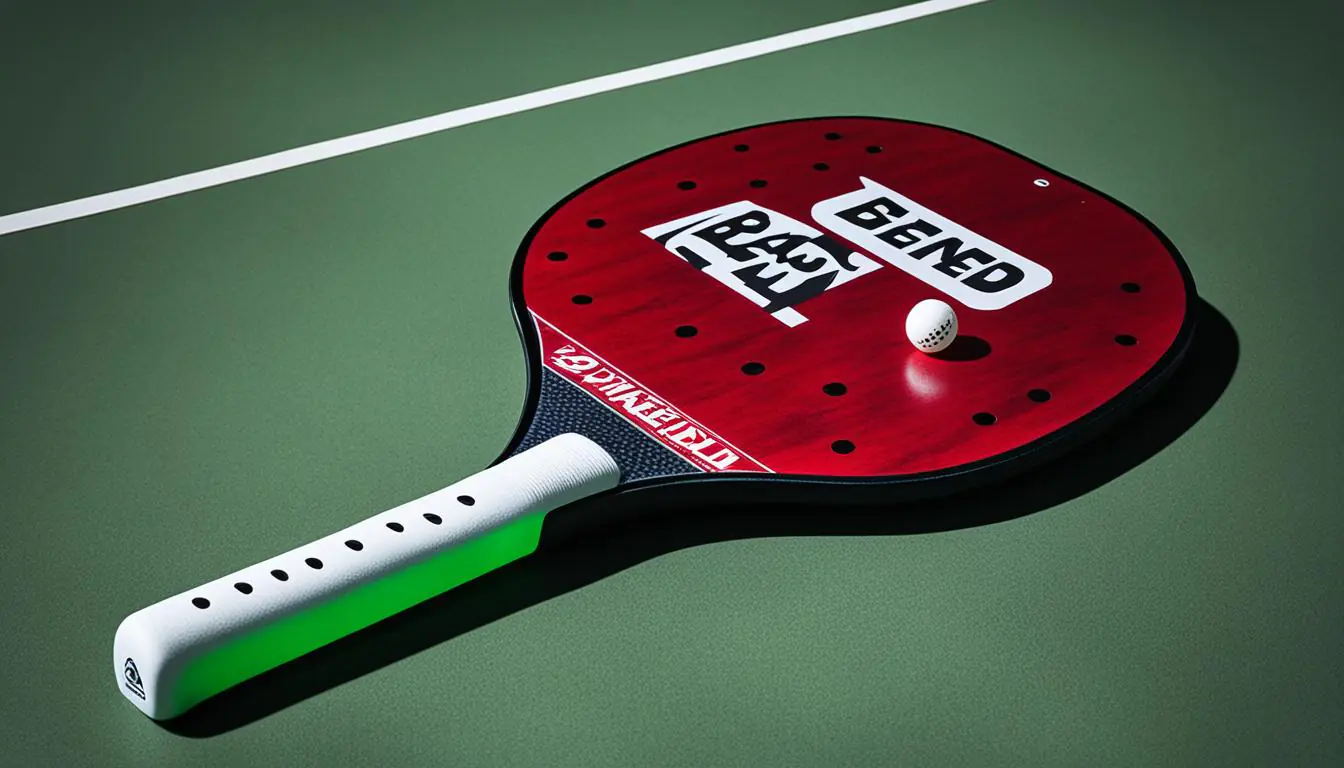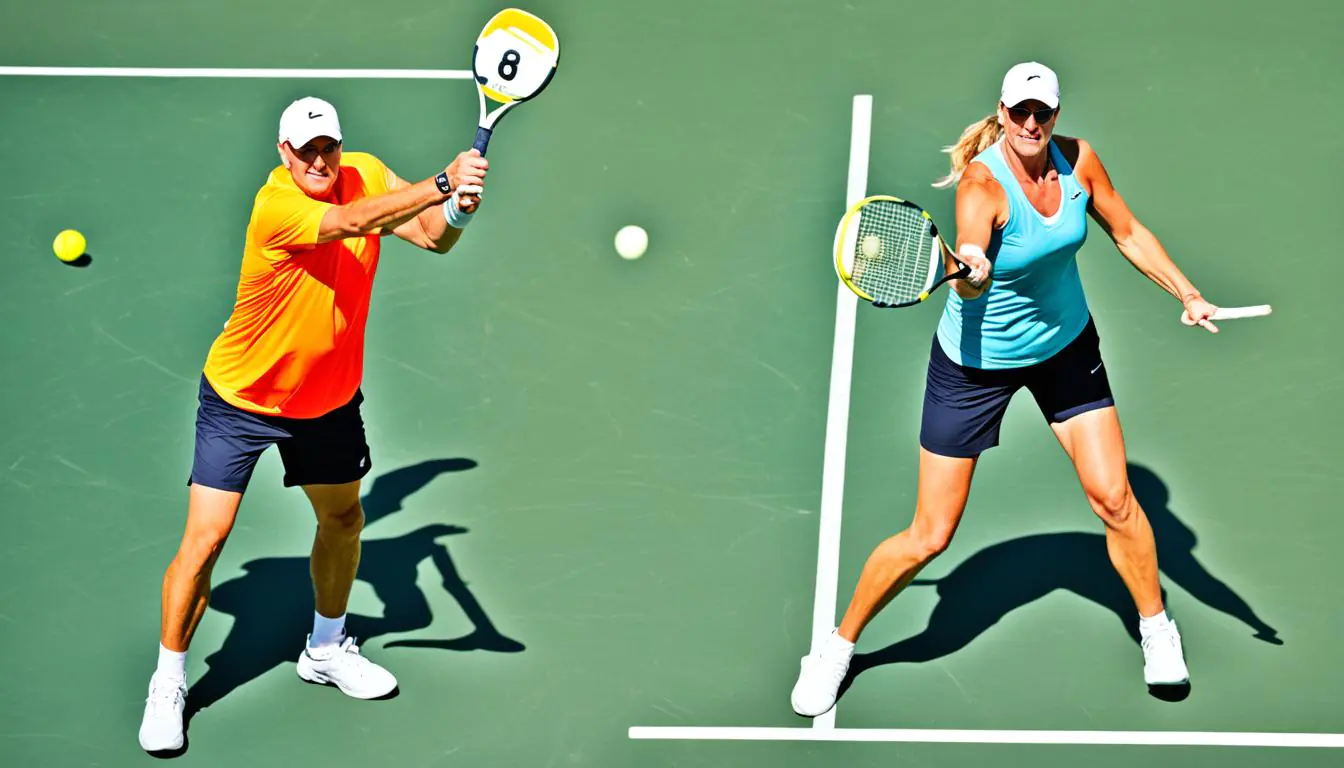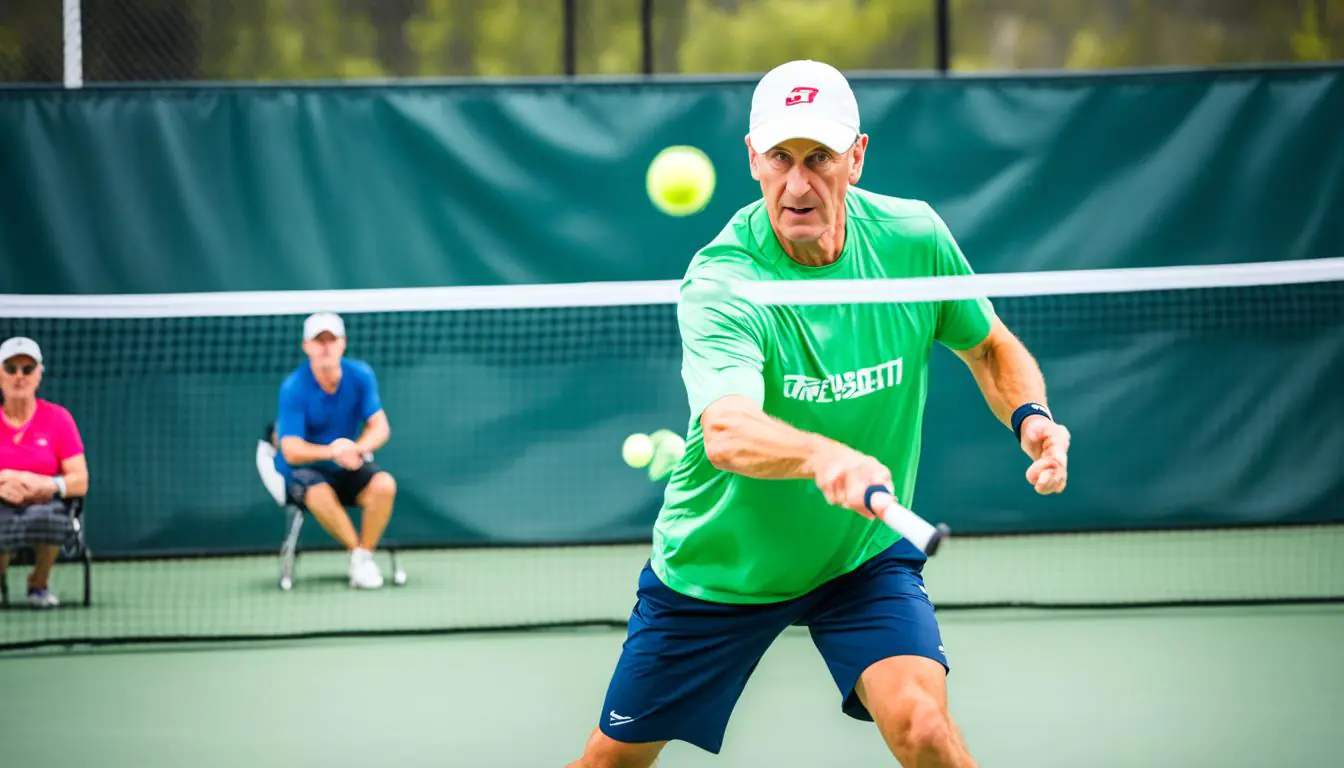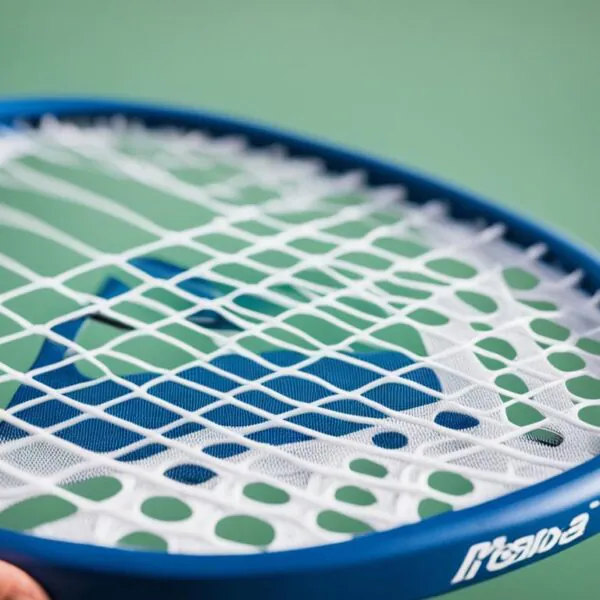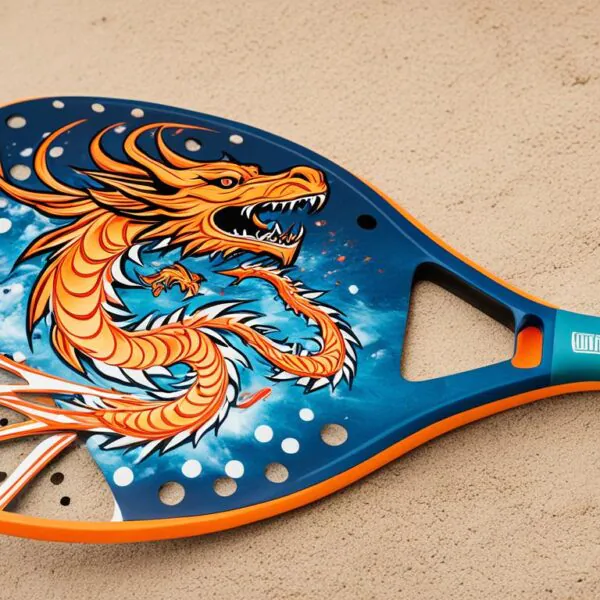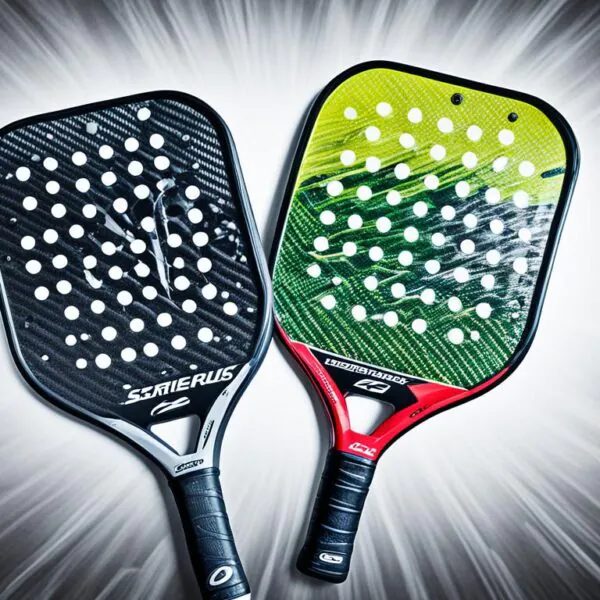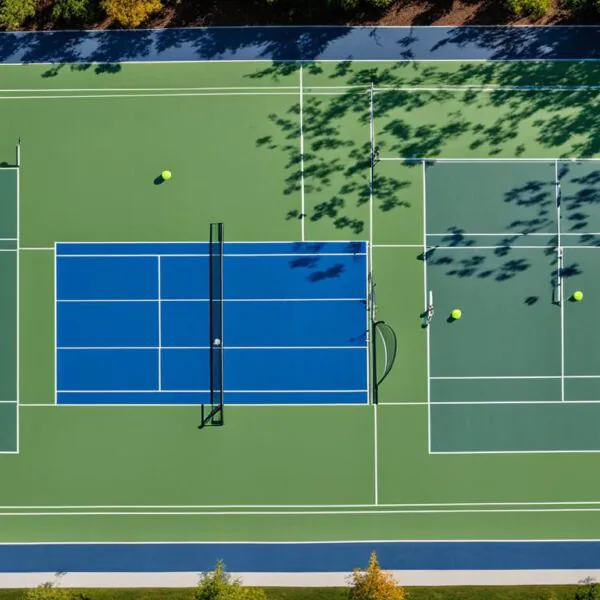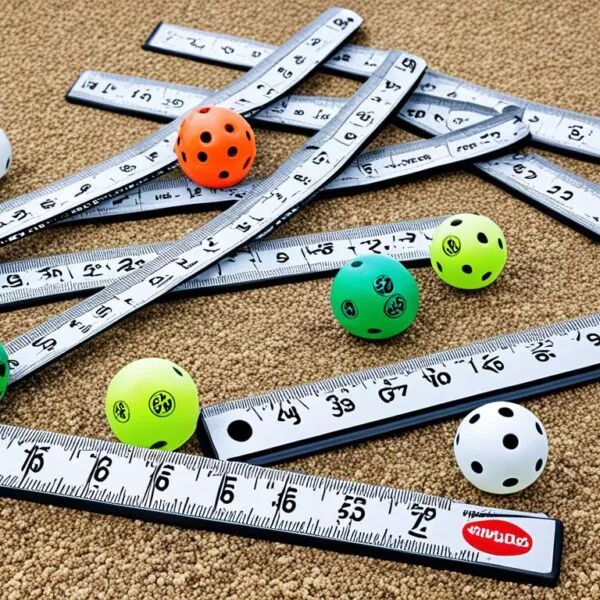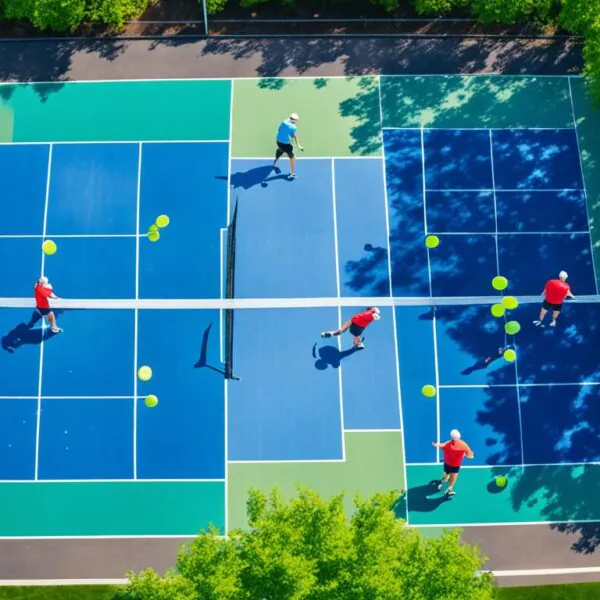Pickleball is now the fastest-growing sport in America. It’s key to know the Pickleball rules for both new and experienced players. This guide will make the game’s basics, scoring, and court rules clear.
Learning the basic rules can make playing Pickleball more fun and competitive. This guide is perfect for anyone starting or improving their skills. It’s a great way to dive into the world of Pickleball.
Key Takeaways
- Pickleball is played on a 20′ x 44′ court with a 7-foot non-volley zone.
- The scoring system typically reaches 11 points, with a required margin of 2.
- Understanding common pickleball terms can elevate gameplay experience.
- A fault can occur for several reasons, such as not clearing the kitchen zone.
- Doubles play is common, involving strategic positioning and serving tactics.
- Placement is more critical than power when executing shots on the court.
- Effective communication and team coordination are vital in doubles matches.
Understanding the Basics of Pickleball Rules
Pickleball is a fast-growing sport in America. It combines tennis, badminton, and ping-pong. It’s easy to learn and fun to play, both indoors and outdoors. Knowing the basic rules is key for new players.
Overview of Pickleball as a Sport
Pickleball started in 1965 and has become a popular sport. In 2021, over 4.8 million people in the U.S. played it. It’s mostly played in doubles, which makes it great for teamwork and strategy.
Key Equipment Needed for Play
To play pickleball, you need some basic gear:
- Paddles: These are light and can be made of composite or wood.
- Pickleball: It looks like a Wiffle ball but is made for pickleball.
- Court: The court is 20 feet wide and 44 feet long.
- Net: The net is 34 inches high in the middle and 36 inches at the sides.
Common Pickleball Terms
Knowing key terms makes the game better. Here are some important ones:
| Term | Definition |
|---|---|
| Double Bounce Rule | The serve and return must bounce once before players can hit them in the air. |
| Non-Volley Zone | A 7-foot area on both sides of the net where players cannot volley the ball. |
| Fault | Failing to follow specific rules, resulting in a loss of point. |
Official Pickleball Rules You Need to Know
The USA Pickleball Association (USAPA) makes sure the game is fair and consistent. They set the official pickleball rules for everyone. These rules help make the game fun and improve players’ skills.
The Role of the USA Pickleball Association
The USAPA sets the official pickleball rules for the game. Their rulebook helps new and experienced players. It covers scoring, faults, and how the game is structured. For more info, check out the USA Pickleball Official Rulebook for 2024.
Basic Gameplay Structure
Pickleball is mostly played in doubles, but singles matches happen too. The game starts with a serve to the other side. Players serve from the right side if the score is even, and the left side if it’s odd.
Games aim for 11 points, with a 2-point lead needed to win. In tournaments, games can go up to 15 or 21 points, also needing a 2-point lead.
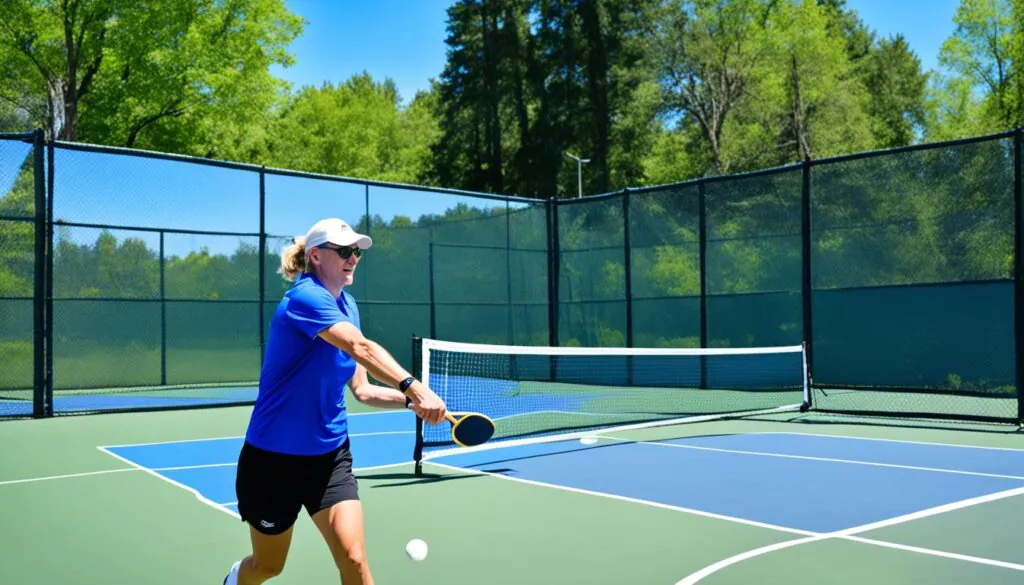
The two-bounce rule says the ball must bounce once on each side before volleying. Players can’t volley in the non-volley zone, which is 7 feet from the net on both sides. If a team makes a mistake, the other team gets a point.
Who serves first can be decided by a coin flip or another fair way. In doubles, the first server goes first, then the second server. Knowing the pickleball court rules can help players get better.
Pickleball Scoring Rules Explained
Learning the pickleball scoring rules is key for new players. The way you score can change between singles and doubles. I’ll explain how points add up and how you win in pickleball.
Doubles vs. Singles Scoring
In doubles, you see three numbers like 0-0-2. The first number is for the serving team, the second for the receiving team, and the third for the server’s turn. This makes the game more strategic. Singles, on the other hand, uses a simpler system with just two numbers, like 0-0.
Understanding the Scoring System
Only the serving team can score in both singles and doubles. In doubles, you win a point when you end a rally after serving. Teams start with one or two serves, depending on who goes first. Keeping track of the score is important to avoid mistakes, especially in tournaments.
Winning the Game: The 11-Point Rule
Most games are played to 11 points, and you need a two-point lead to win. If it’s tied at 10-10, play continues until one team leads by two points. Some games go up to 15 or 21 points. Knowing how scoring works helps players plan their moves in singles and doubles.
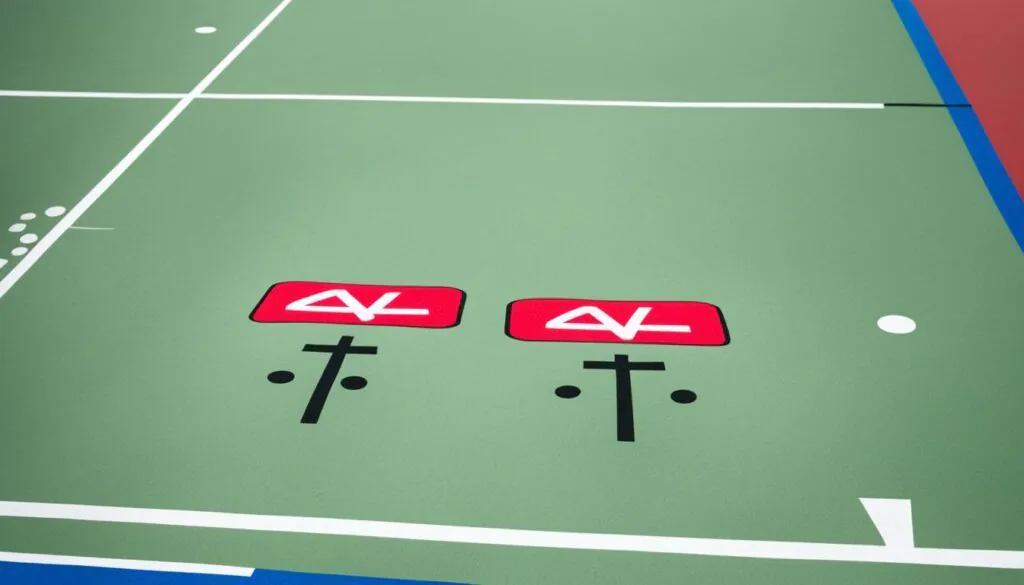
Common Pickleball Court Rules
Knowing the pickleball court rules helps improve your game and makes matches fair. These rules cover the court setup, like size, where you can serve, and the non-volley zone. Knowing these rules well, whether you’re playing outside or inside, can boost your game and keep you safe.
Dimensions of a Pickleball Court
A standard pickleball court is 20 feet wide and 44 feet long for singles or doubles. It has different areas, so knowing the layout is key. The non-volley zone, or “the kitchen,” is seven feet from the net on both sides. It’s important for gameplay.
Non-Volley Zone (Kitchen) Regulations
The non-volley zone, or “the kitchen,” is seven feet from the net on both sides. You can’t hit the ball from this zone unless it has bounced first. This rule keeps the game safe and fair.
Serving and Receiving Positions
Where you stand when serving and receiving is important. When serving, you must be behind the baseline and hit the ball below your waist. The player receiving can stand anywhere on their side of the court. Remember, the ball must bounce on both sides before you can hit it in the air.
| Aspect | Outdoor Pickleball Rules | Indoor Pickleball Rules |
|---|---|---|
| Court Dimensions | 20 ft x 44 ft | 20 ft x 44 ft |
| Non-Volley Zone | 7 ft from the net on both sides | 7 ft from the net on both sides |
| Serving Position | Behind baseline, below waist height | Behind baseline, below waist height |
| Receiving Position | Anywhere on their side | Anywhere on their side |
| Two Bounce Rule | Must bounce on each side | Must bounce on each side |
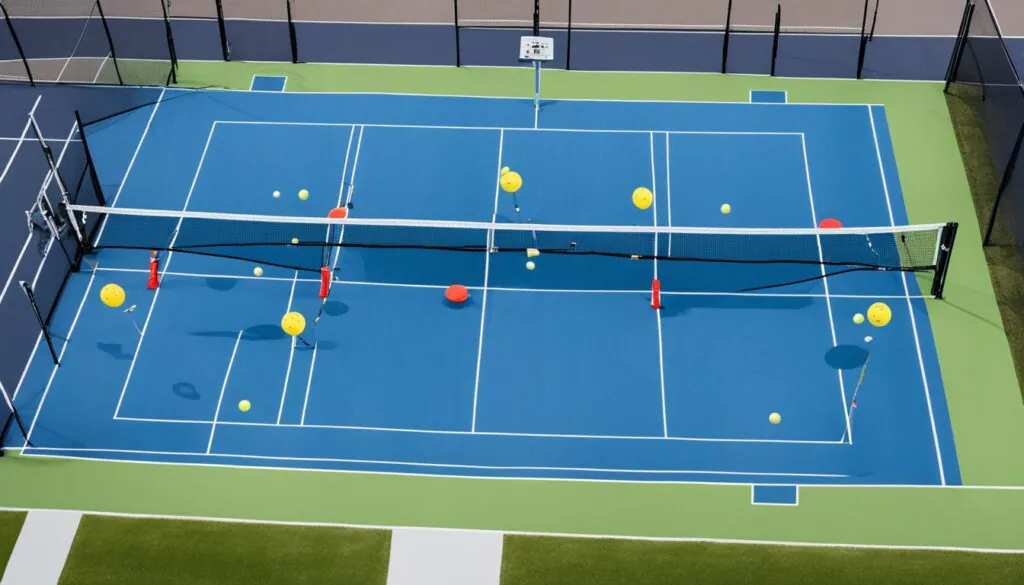
Conclusion
This guide is a great start to learning pickleball rules. Pickleball is growing fast in the U.S. and knowing the rules is key for fun and competition. It’s important to understand how to score and the rules of the court.
Using the right gear, like paddles, helps a lot. Knowing about the non-volley zone is also important. Serving and the double bounce rule are key parts of the game.
Learning these basics makes me better at the game and more fun. It helps me enjoy pickleball more.
As I play more, I’ll get better at my skills and strategies. This knowledge is great whether I play for fun or to win. It’s really useful.
